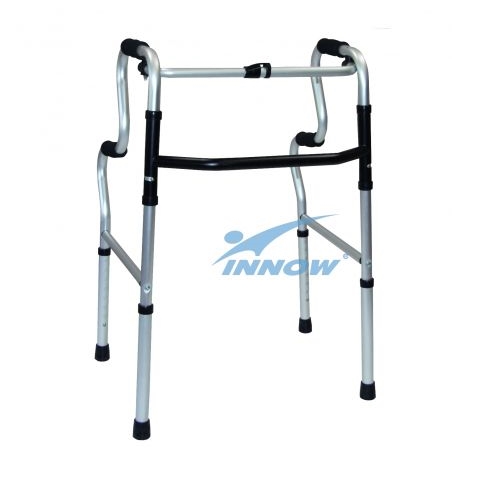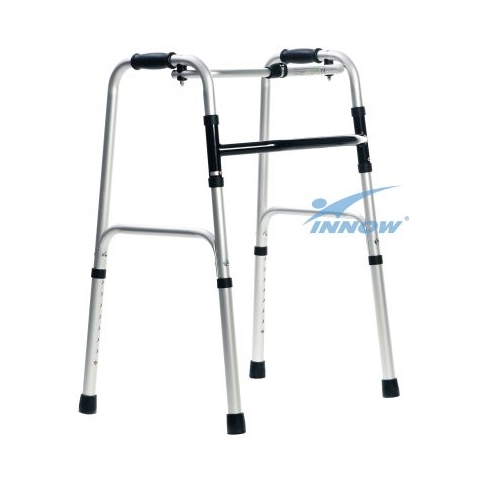Fixed walkers
-

T645W – Balkonik – podpórka stała ułatwiająca wstawanie
Add to cart275.00 zł netto297.00 zł brutto -

With age, muscle strength and balance control naturally decline, making it increasingly difficult for older adults to stand up and walk independently. In many cases, there may be no one nearby to provide assistance, and asking for help can feel uncomfortable or embarrassing.
Regardless of age, individuals who have been bedridden for extended periods often face challenges when relearning to walk. It is crucial to provide a safe and supportive environment that allows patients to exercise independently and rebuild confidence in their physical abilities.
A proven and effective solution in such cases is the use of fixed rehabilitation walkers (commonly referred to as “balcony walkers”), featuring a stable and lightweight metal frame. These walkers can be easily pulled toward the patient while seated, offering secure support for standing up. This is made possible by the anti-slip rubber tips at the base, which ensure the walker remains stable on various surfaces.
Unlike wheeled models, fixed walkers do not roll—but this does not limit their function to standing only. These walkers can be lifted and moved forward by the user, allowing for safe and gradual mobility support. They are particularly beneficial not only for assisting in getting up but also for helping the patient walk securely and sit down again when needed.
Fixed walkers provide three-sided support, significantly reducing the risk of falls. In the event of a loss of balance, the user can regain stability by leaning on the frame instead of falling.
Such rehabilitation and mobility aids play a critical role in maintaining motor function and supporting upright posture, especially in patients with musculoskeletal impairments. Many patients in recovery are hesitant to engage in movement due to fear of falling or injury. Walkers help to alleviate these fears, promoting safer and more confident rehabilitation.
These devices are equipped with ergonomic, comfortable handles and height adjustment mechanisms, allowing them to be tailored to the patient’s needs. Despite their sturdy construction, they remain lightweight and easy to maneuver.
There are also models available with dual-height handles—the lower level assists in rising from a seated position, while the upper level provides support during standing and walking. This thoughtful design further enhances patient safety and autonomy during the rehabilitation process.



